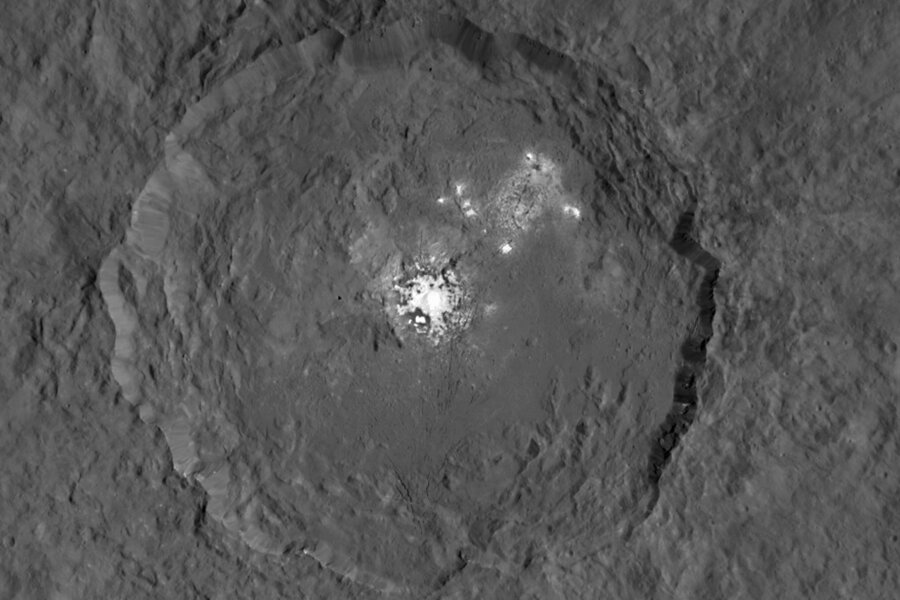Dawn brings mysterious bright spots on Ceres into focus
Ceres, the dwarf planet with secrets, is a little less mysterious today because of closer-than-ever photos snapped from NASA's Dawn spacecraft. But not by much.
The latest images, released Wednesday by NASA, still do not reveal what those bright spots are on the floor of Ceres' Occator crater. But NASA scientists have a slightly deeper understanding of these unique features thanks to new images with a resolution of 450 feet per pixel, the best yet captured of Ceres by NASA's Dawn spacecraft. This is cause for optimism at mission headquarters at NASA's Jet Propulsion Laboratory in Pasadena, Calif.
"Dawn has transformed what was so recently a few bright dots into a complex and beautiful, gleaming landscape," said Marc Rayman, Dawn's chief engineer and mission director, in a NASA blog post. "Soon, the scientific analysis will reveal the geological and chemical nature of this mysterious and mesmerizing extraterrestrial scenery."
The latest view of the Occator crater adds better definition to the shapes of the brightest spot and the features of the crater floor. Capturing both the bright spot and the dimmer crater floor in the same view actually required compiling two separate images; one properly exposed for the brightness of the mysterious spots, and one for the surrounding surface.
Following Dawn's last orbit around the dwarf planet in June, “Dawn scientists can now conclude that the intense brightness of these spots is due to the reflection of sunlight by highly reflective material on the surface, possibly ice,” Dawn’s principal investigator, Christopher Russell said in a statement at the time.
These latest images have three times the resolution of those captured during Dawn's previous orbit in June, and ten times that of those transmitted during the spacecrafts first orbit in April and May.
The spacecraft has already completed two 11-day cycles of mapping the surface of Ceres from its current altitude, and began the third on Thursday. Dawn will map all of Ceres' surface six times over the next two months. Each cycle includes 14 orbits, and will take images a a different angle for each cycle in hopes of gathering enough imagery to assemble stereo views and 3-D maps of the surface.
Dawn's claim to fame is as the first mission to visit a dwarf planet, and the first to orbit two distinct solar system targets. The spacecraft first orbited protoplanet Vesta for just over a year in 2011 and 2012, and arrived at Ceres on March 6, 2015.
Scientists have made animations that provide a virtual fly-around of the mysterious "lights of Occator", which you can view here.






